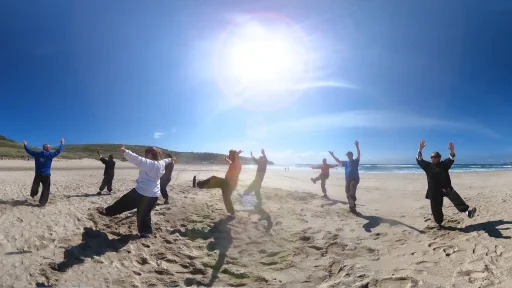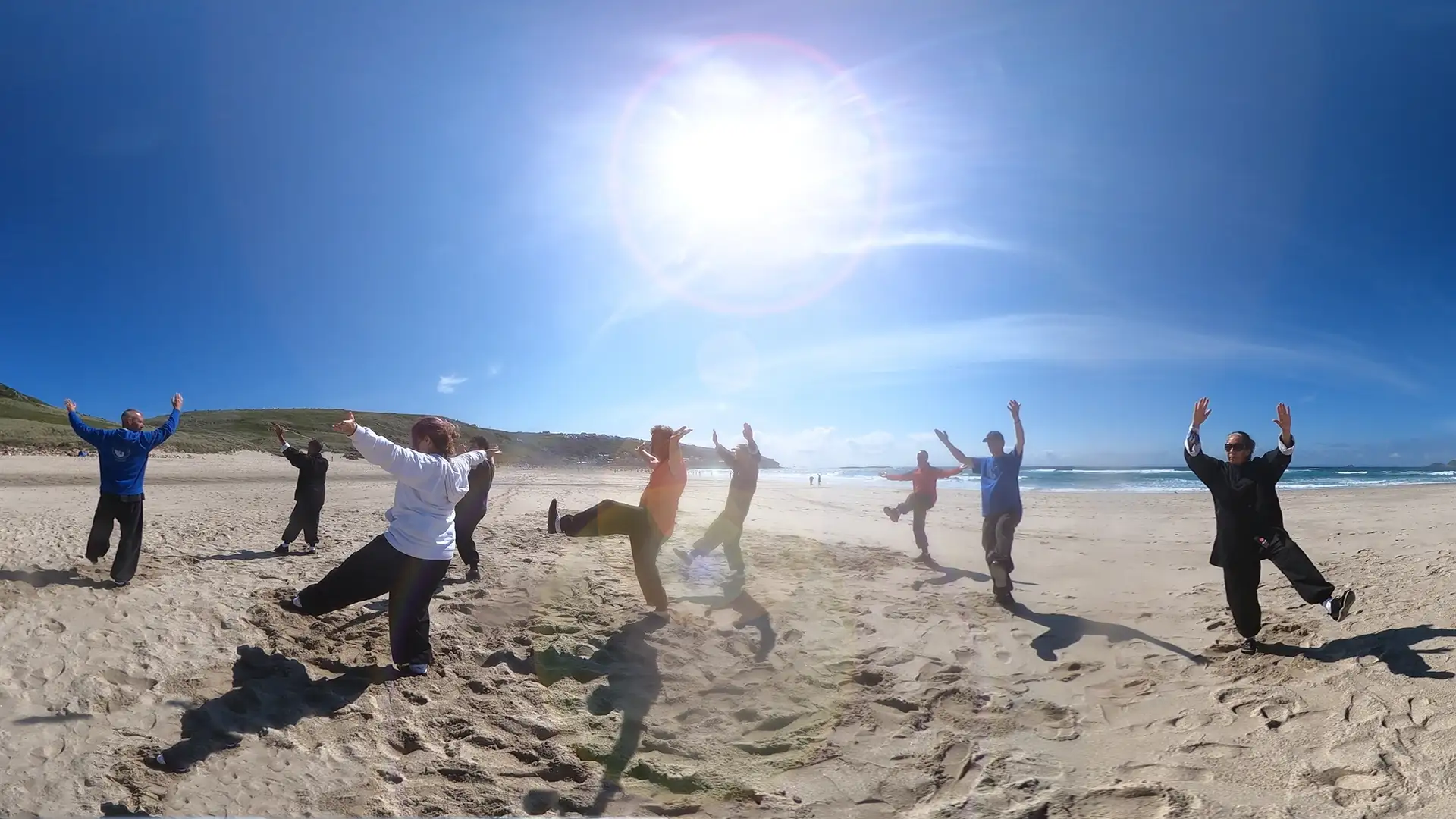
Tai Chi is an ancient Chinese practice that has become increasingly popular all over the world in recent years. This practice has been known to improve health, reduce stress, and promote relaxation. It is a form of martial arts that focuses on gentle movements, deep breathing, and meditation.
In this blog post, we will explore what Tai Chi is, its history, its benefits, and some tips on how to get started.
What is Tai Chi?
Tai Chi is a practice that originated in China more than 3000 years ago. It is also known as Tai Chi Chuan, which translates to “supreme ultimate fist”. It is a form of martial arts that emphasizes slow, gentle movements and breathing techniques to help improve the flow of energy throughout the body.
Tai Chi is often referred to as “moving meditation” because it involves both physical and mental aspects. It combines meditation, deep breathing, and movements to create a mind-body practice that is gentle on the joints and muscles. Unlike many other forms of exercise, Tai Chi is low-impact and can be practiced by people of all ages and fitness levels.
Tai Chi is often performed in groups, with practitioners moving in unison through a series of postures. These postures, or forms, are designed to flow together smoothly, with each movement leading into the next. Each posture is held for a few seconds to a few minutes, with practitioners focusing on their breath and the movements of their body.
History of Tai Chi
Tai Chi has a long and rich history dating back more than 3000 years. Its origins can be traced back to the Taoist Shamanic practices that were prevalent before documented history began. During those times, mankind was more closely connected to the natural world, and the early Taoists studied animal skills and movements to develop the first stances and forms.
Around 12,000 years ago, the Earth experienced a catastrophic change that saw mass extinctions and dramatic changes in sea levels, throwing civilization back to more primitive times. Emerging scientific tools and archaeological discoveries have shed new light on what life may have been like during the Ice Age when the climate zones were in completely different regions than what we know today.
During this tumultuous time, a group known as the Sons of Reflected Light (Fanguangzi 反光子) emerged as a dedicated group of individuals who sought to preserve knowledge from the previous epoch. Legends handed down by word of mouth tell of a race of people over seven feet in height who wore reflective clothing. They traveled around the world, recruiting artisans from the cultures they encountered, and taught basic skills such as agriculture, stonework, ceramics, silk weaving, Chinese medicine, the healing arts, and other necessary basic survival skills to help societies recover after the disaster. Tai Chi was one of the many practices that evolved from these teachings and was eventually formalized into what we know today.
As more and more teachers and students began to work on Tai Chi, the forms developed and partner exercises and weapons training became more standardized. Each region’s unique geographical qualities influenced the evolution of Tai Chi, leading to the emergence of various styles. Despite its roots in martial arts, Tai Chi evolved into a form that focused on health and wellness, becoming popular among the Chinese aristocracy and eventually spreading to the West in the early 20th century.
Today, Tai Chi is practiced all over the world, with millions of people enjoying its health benefits. Its gentle movements, deep breathing, and meditation make it an excellent form of exercise for people of all ages and fitness levels. Regular practice has been linked to improved balance, flexibility, coordination, and reduced stress levels. Furthermore, studies have shown that Tai Chi can help alleviate symptoms of various medical conditions, such as arthritis, chronic pain, and depression.
Tai Chi is not just a form of martial arts, but a practice that has its roots in ancient Taoist Shamanic practices. Its evolution is intertwined with the history of humanity, and it has endured the test of time, becoming a beloved practice for millions around the world. With its focus on health and wellness, Tai Chi offers a unique way to connect with oneself, the natural world, and find inner peace.
Benefits of Tai Chi
Tai Chi has been shown to have numerous health benefits, both physical and mental. Here are just a few of the many benefits of this practice:
- Improves balance and stability: Tai Chi requires practitioners to shift their weight from one foot to the other, which helps improve balance and stability. This can be especially beneficial for older adults, who are at a higher risk of falls.
- Reduces stress and anxiety: Tai Chi is a form of moving meditation that helps calm the mind and reduce stress and anxiety. The slow, gentle movements and deep breathing techniques can help practitioners feel more relaxed and centered.
- Improves flexibility and range of motion: The gentle, flowing movements of Tai Chi can help improve flexibility and range of motion in the joints. This can be especially beneficial for people with arthritis or other joint conditions.
- Promotes relaxation and better sleep: Tai Chi has been shown to promote relaxation and improve sleep quality. Practitioners often report feeling more relaxed and less anxious after a session of Tai Chi, which can help them sleep better at night.
- Boosts the immune system: Tai Chi has been shown to boost the immune system and reduce inflammation in the body. This can help prevent illness and disease, and may even help slow the aging process.
Getting Started with Tai Chi
If you’re interested in trying Tai Chi, here are a few tips to help you get started:
- Find a qualified instructor: It’s important to find a qualified Tai Chi instructor who can guide you through the movements and help you learn proper form. Look for an instructor who is certified by a reputable Tai Chi organization and has experience working with beginners. We can help you with that.
- Wear comfortable clothing: Tai Chi is typically practiced in loose, comfortable clothing that allows for ease of movement. Avoid wearing restrictive clothing that may hinder your movements.
- Start with a beginner class: Most Tai Chi classes are designed for beginners and will teach you the basic postures and movements. Don’t worry if you’re not flexible or coordinated – Tai Chi is a practice that anyone can learn with time and practice.
- Practice regularly: Like any form of exercise, Tai Chi requires regular practice to see results. Aim to practice at least two to three times per week to start seeing the benefits of this practice. In China people practice every day.
- Listen to your body: Tai Chi is a gentle form of exercise, but it’s important to listen to your body and avoid pushing yourself too hard. If a posture or movement feels uncomfortable or painful, modify it or skip it altogether.
In conclusion, Tai Chi is a beautiful and ancient practice that offers numerous physical and mental benefits. It is a low-impact form of exercise that can be practiced by people of all ages and fitness levels. With its focus on gentle movements, deep breathing, and meditation, Tai Chi offers a way to find inner peace, reduce stress, and improve overall health and well-being. So why not give it a try and see what it can do for you?
